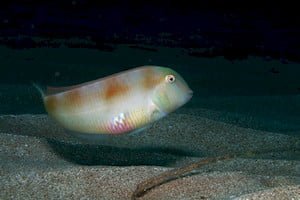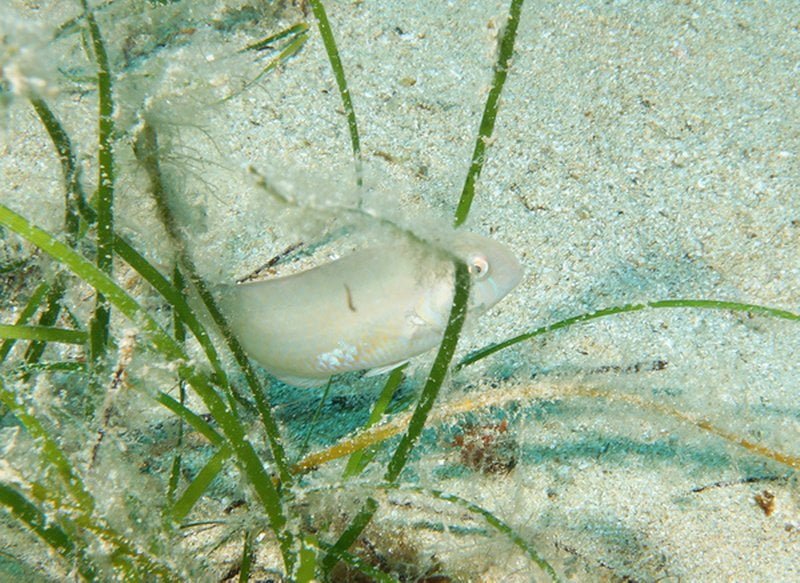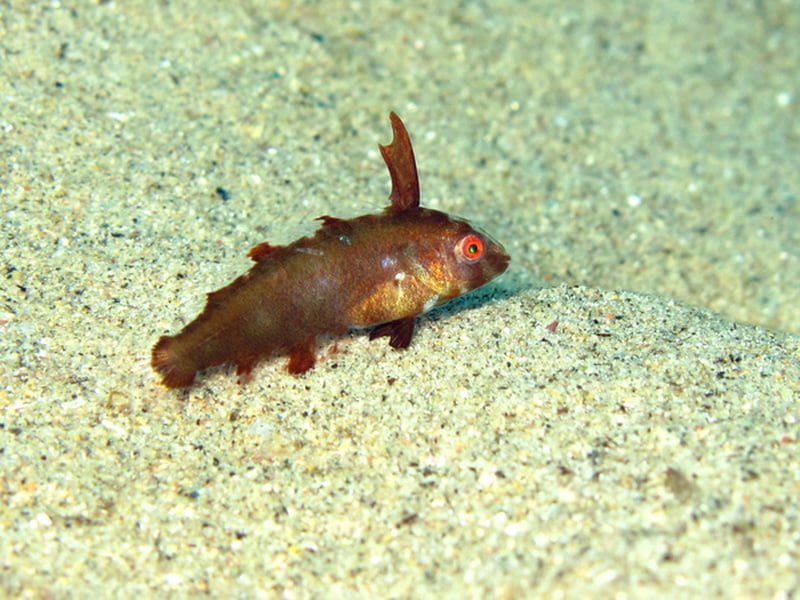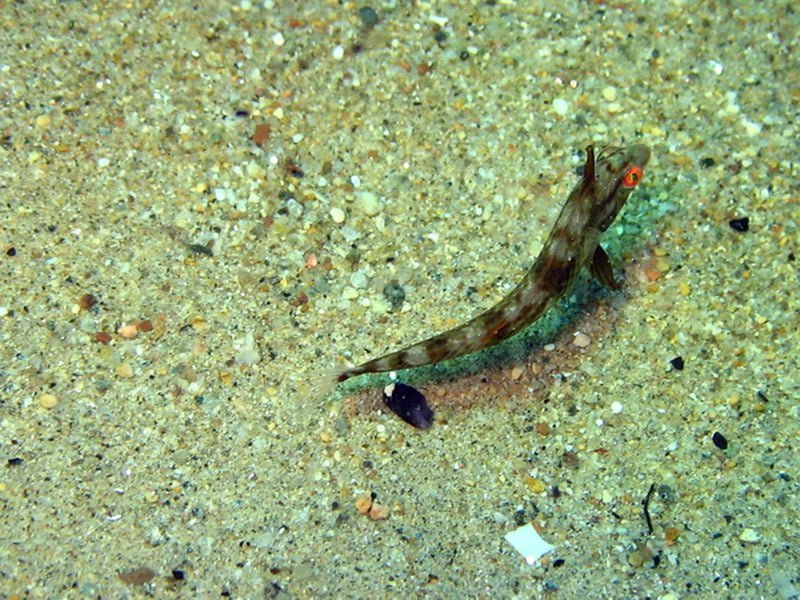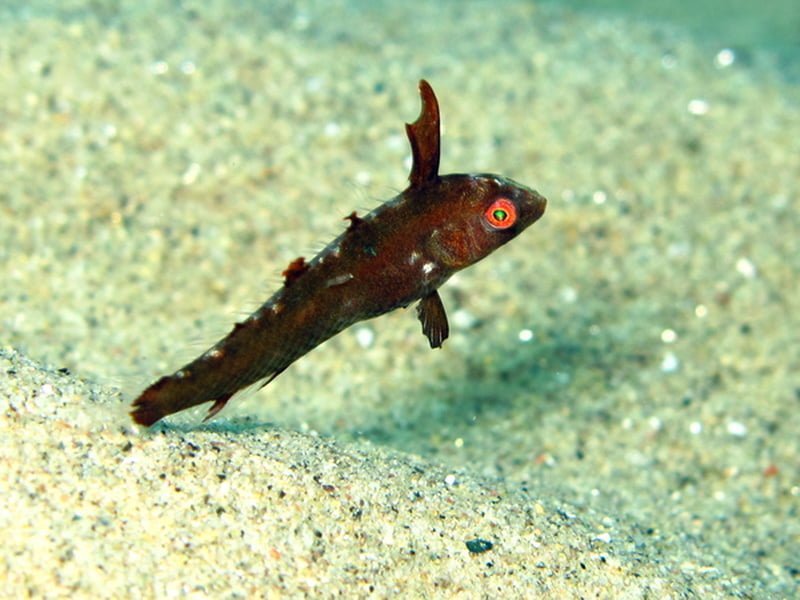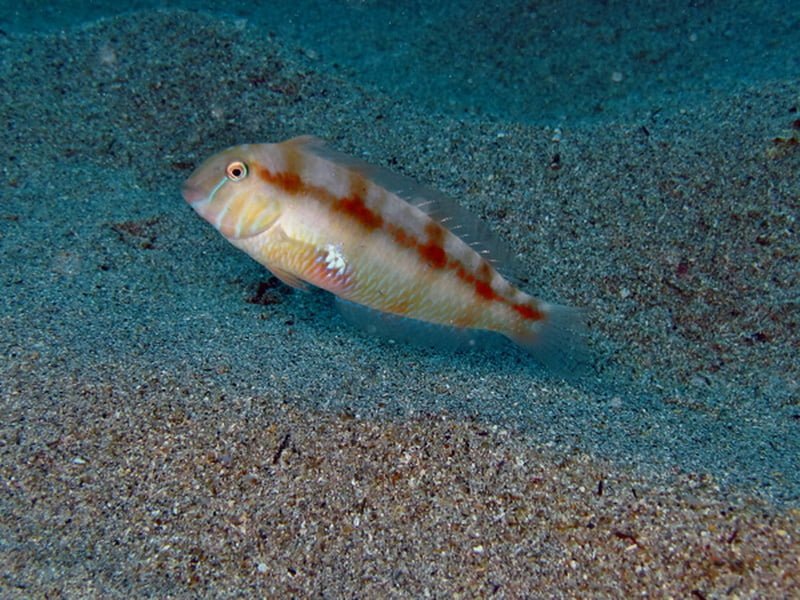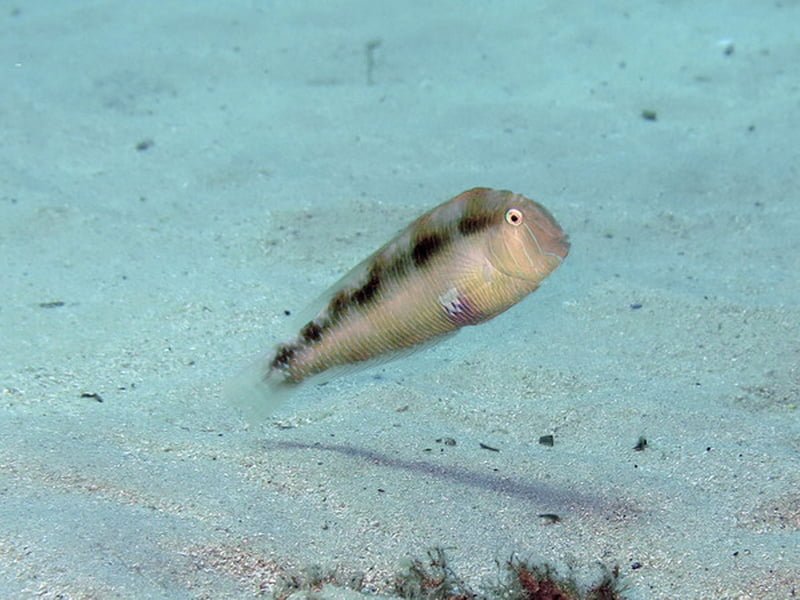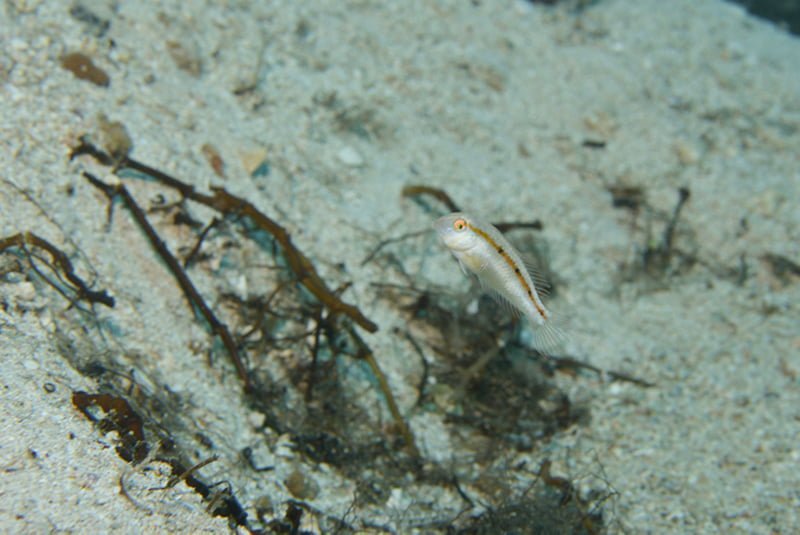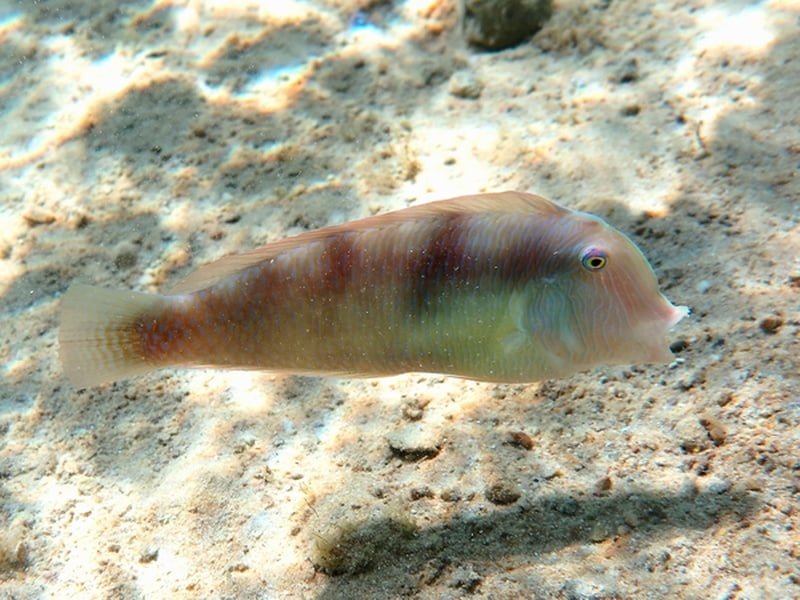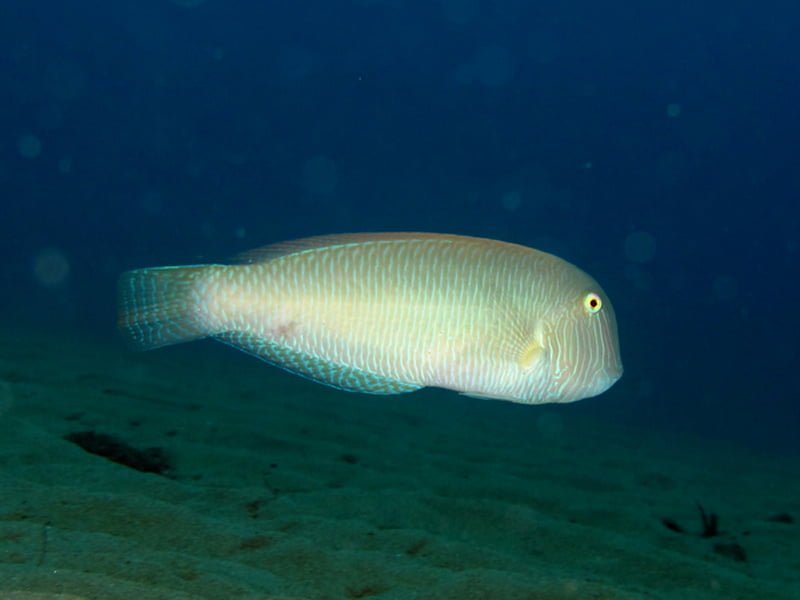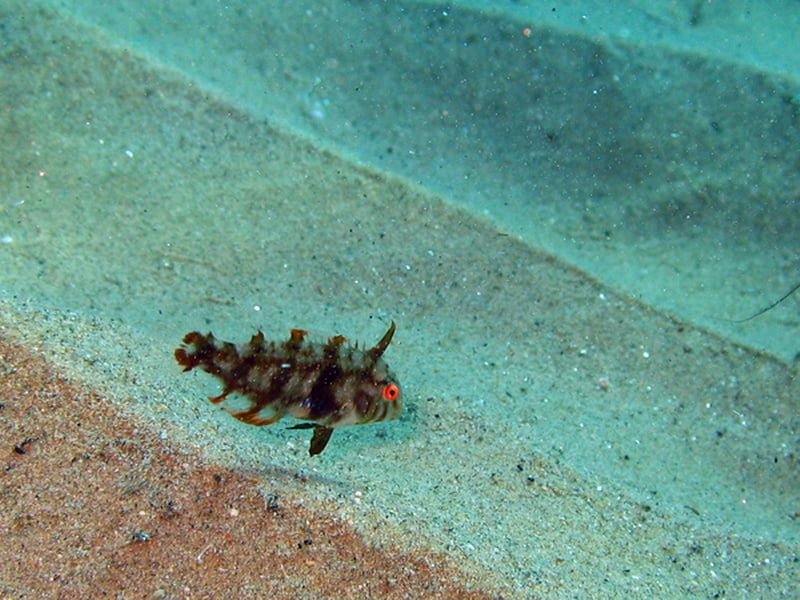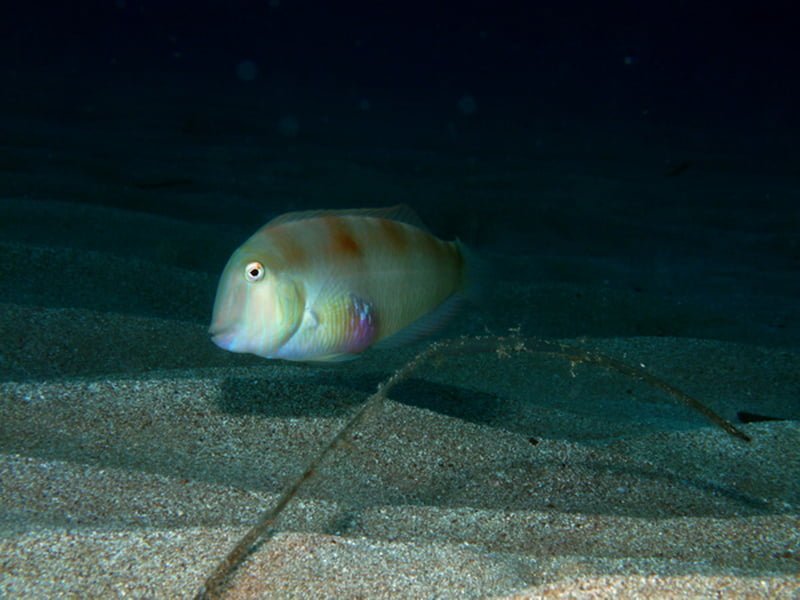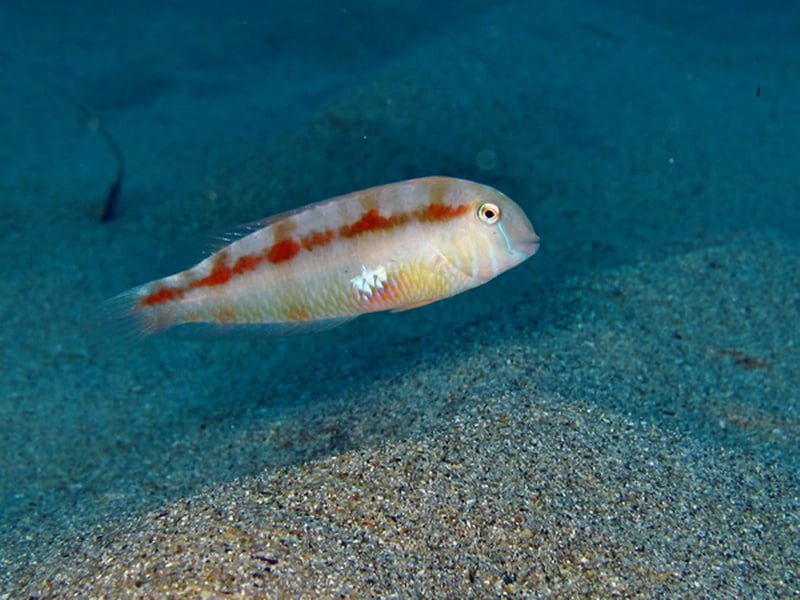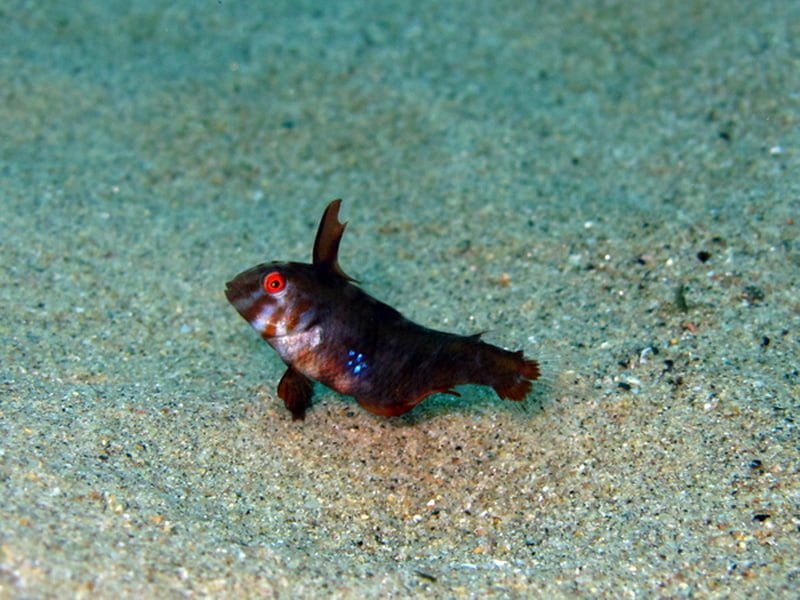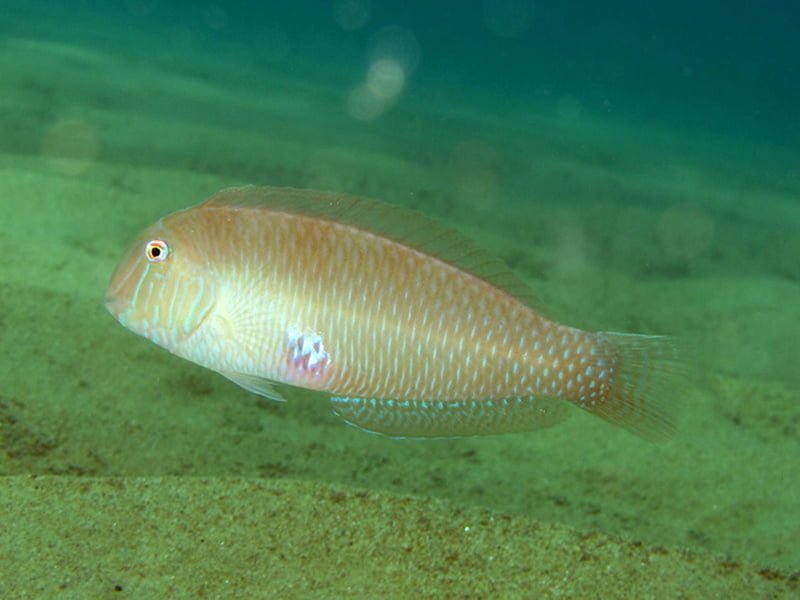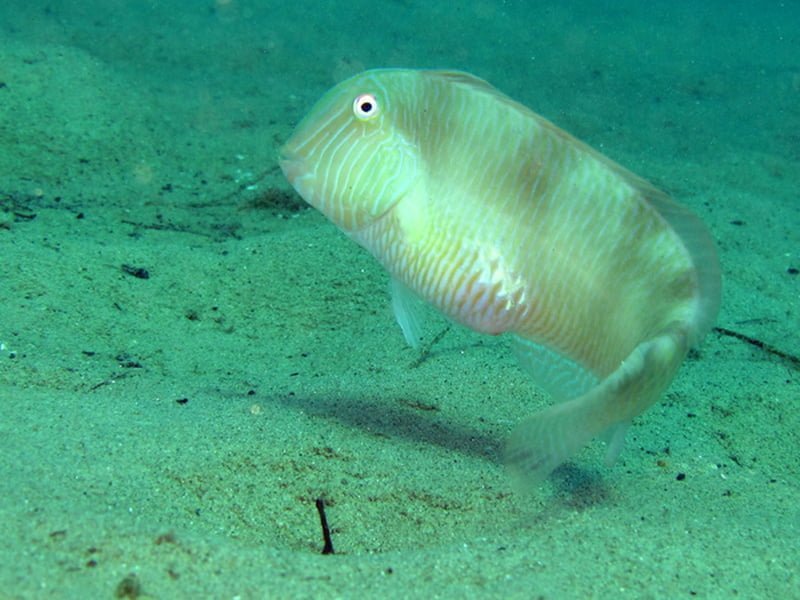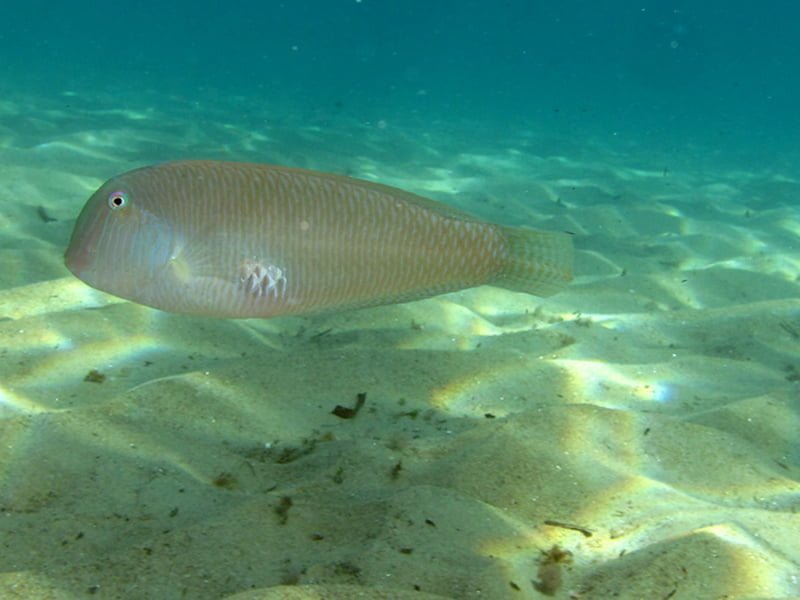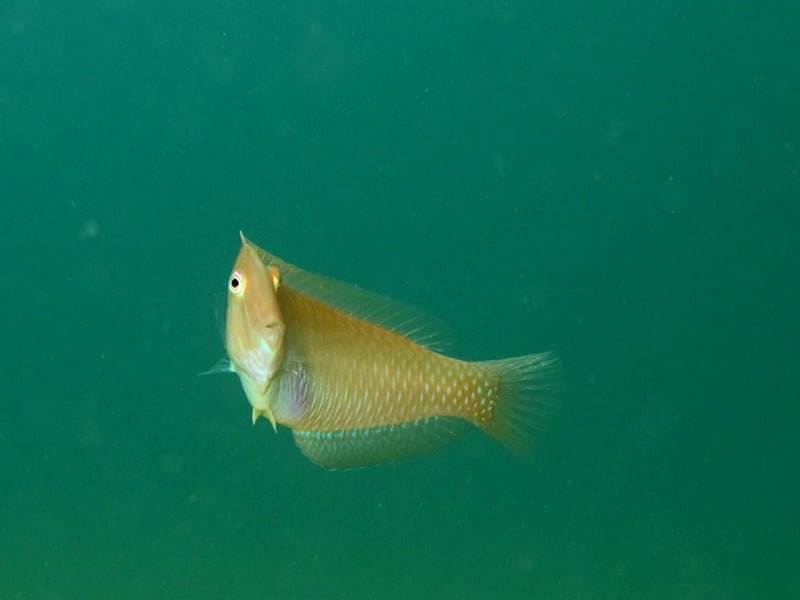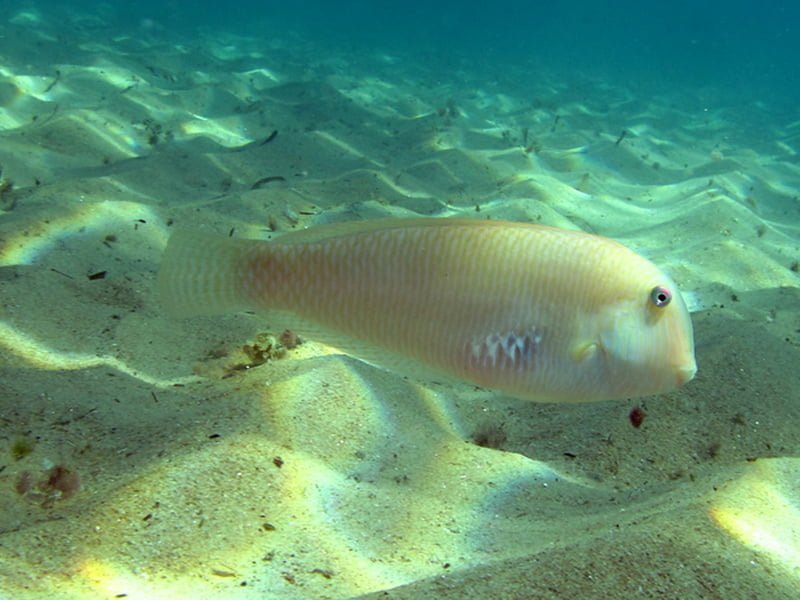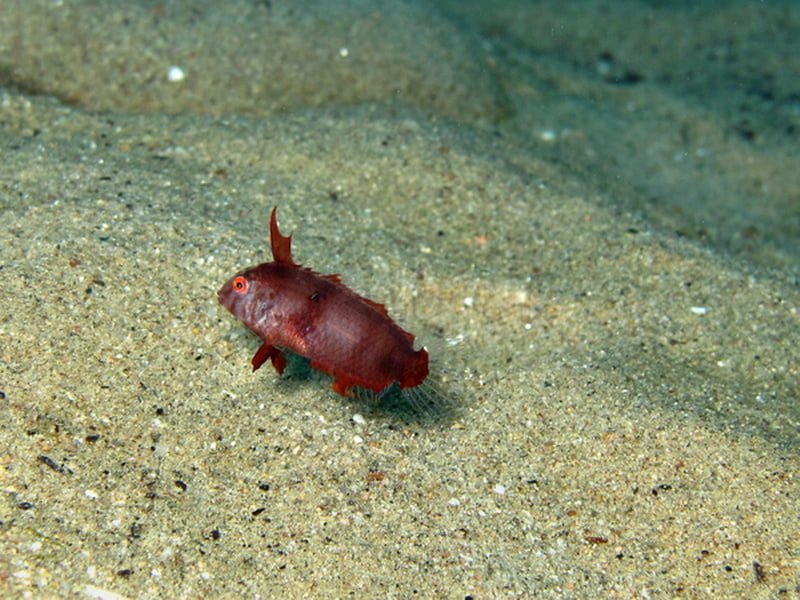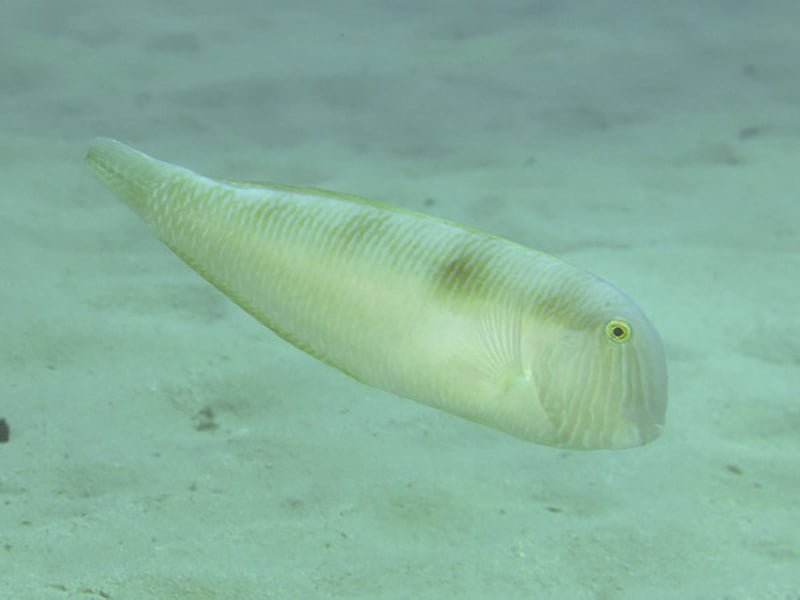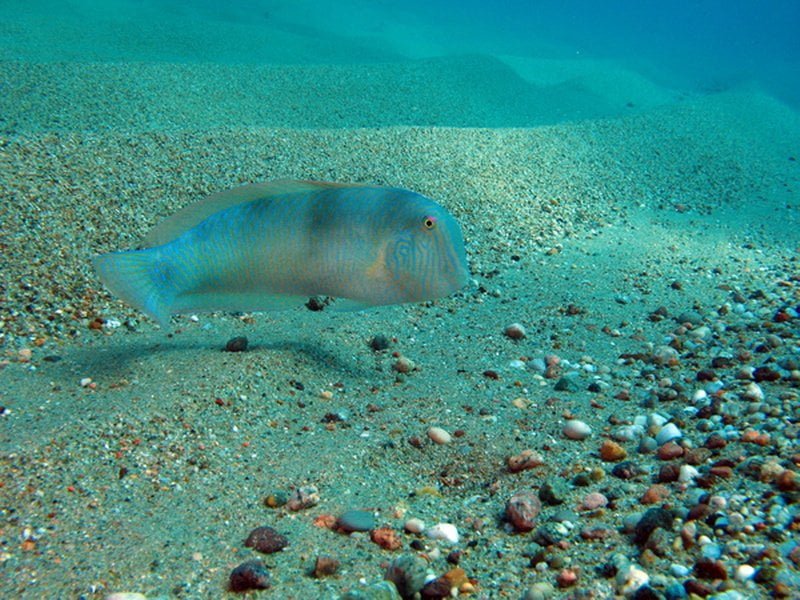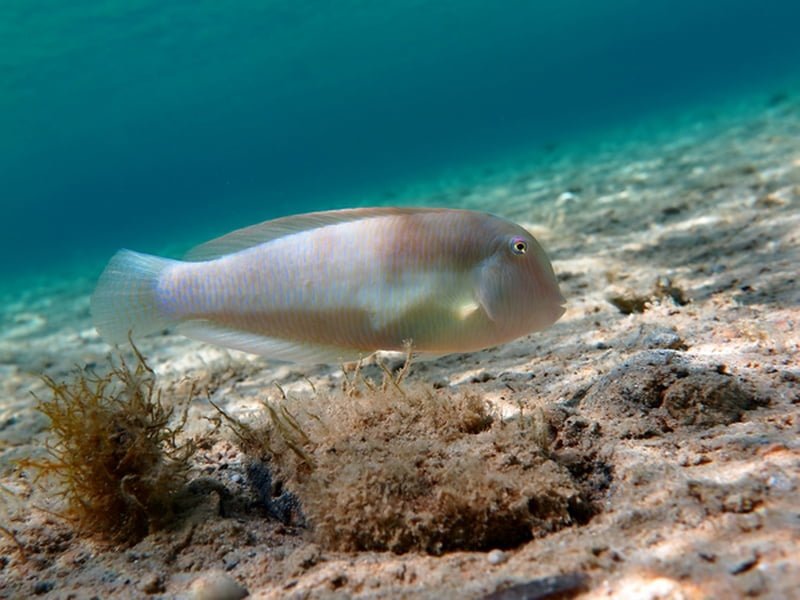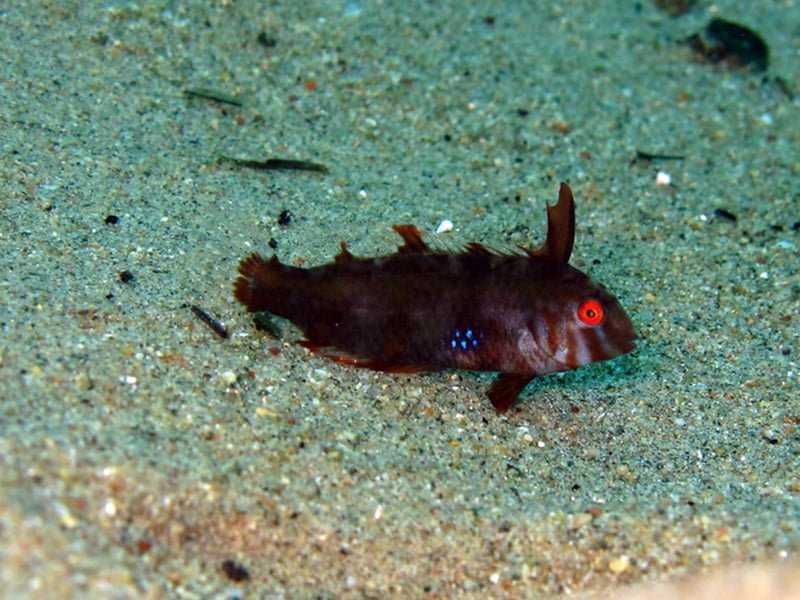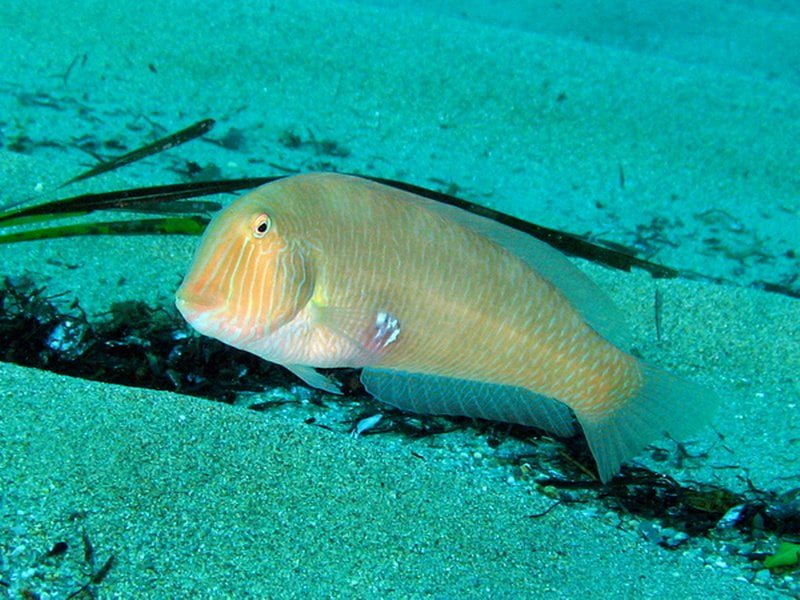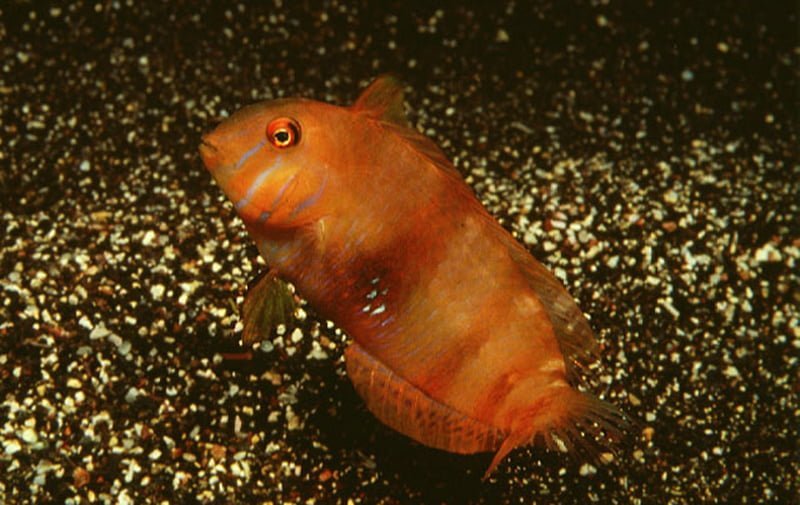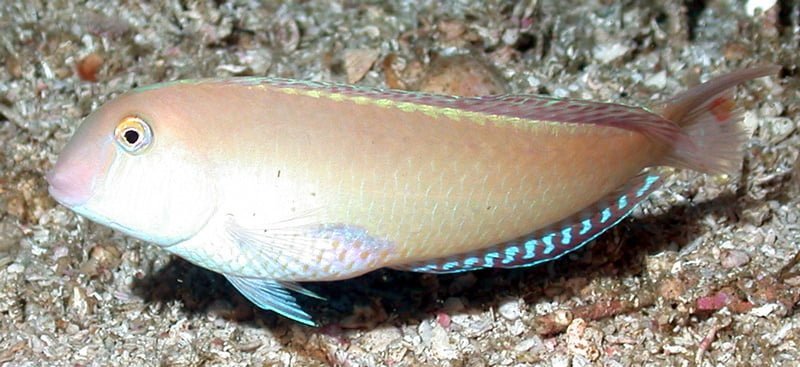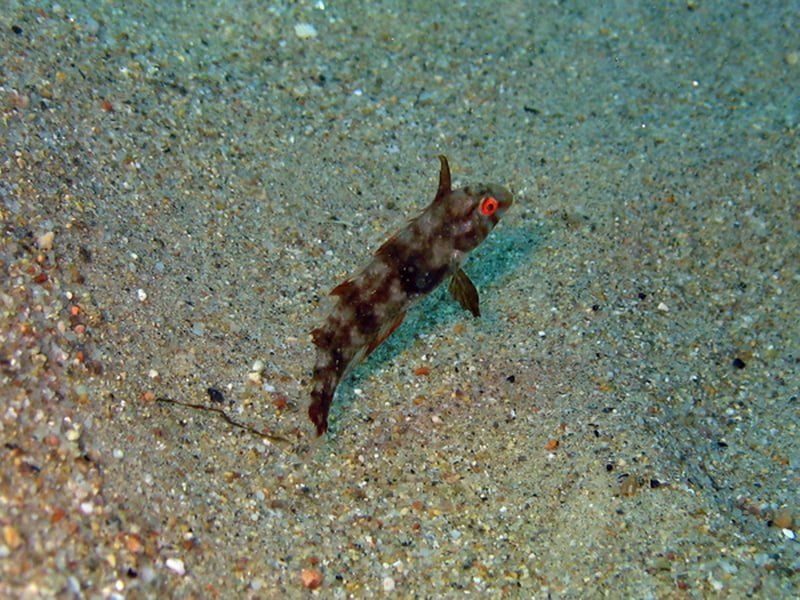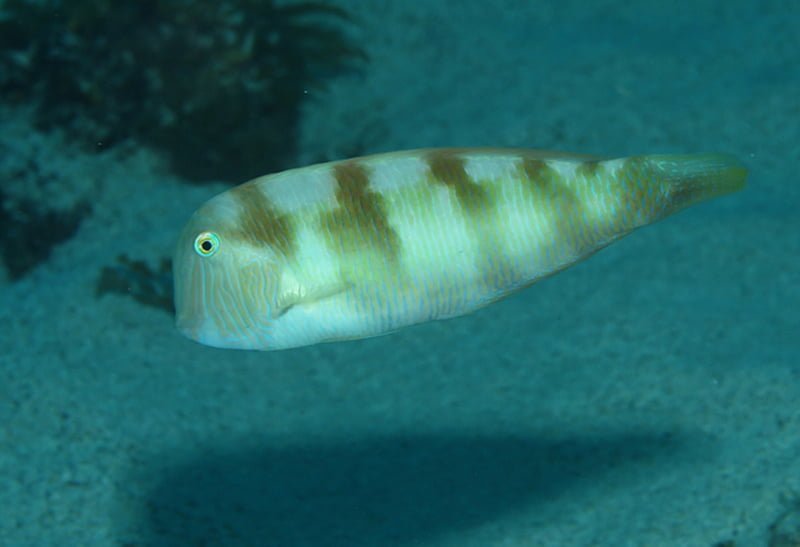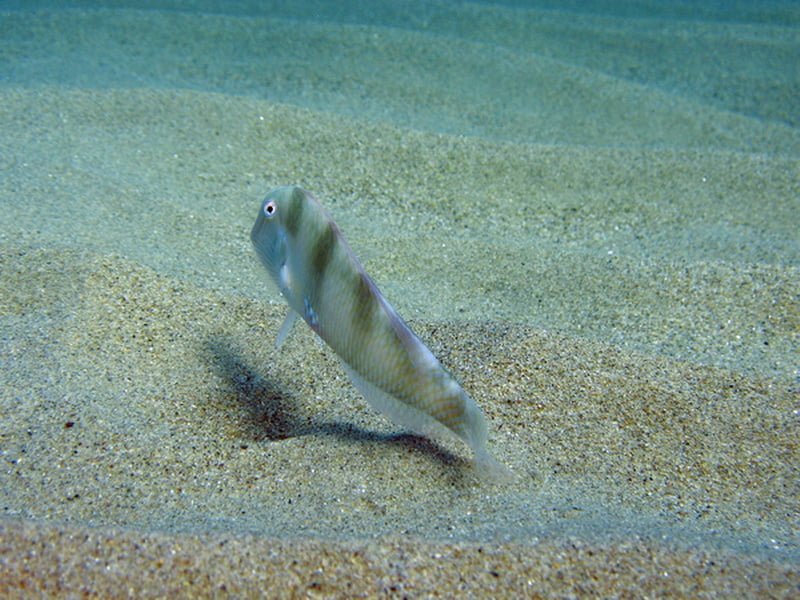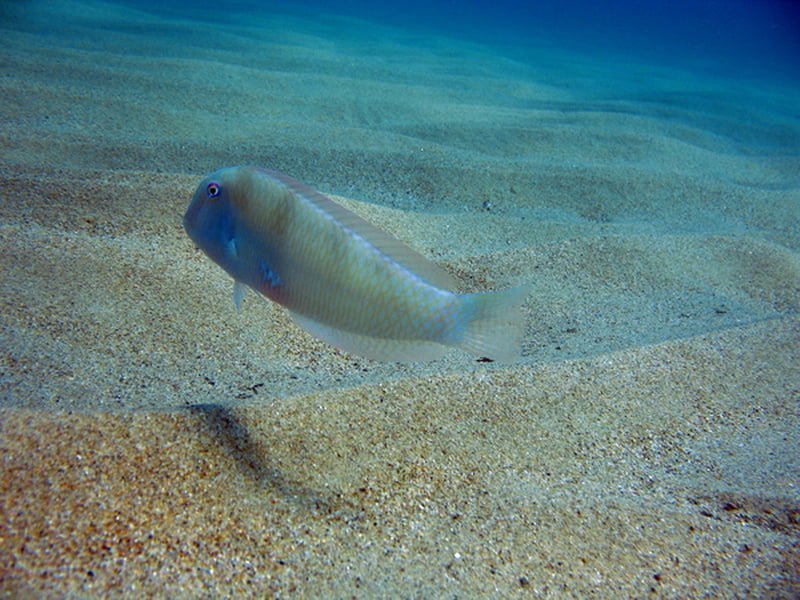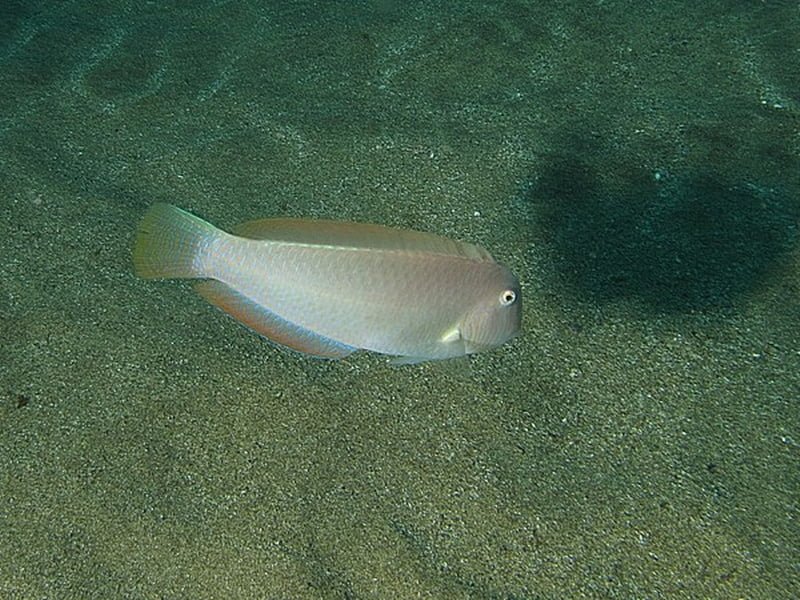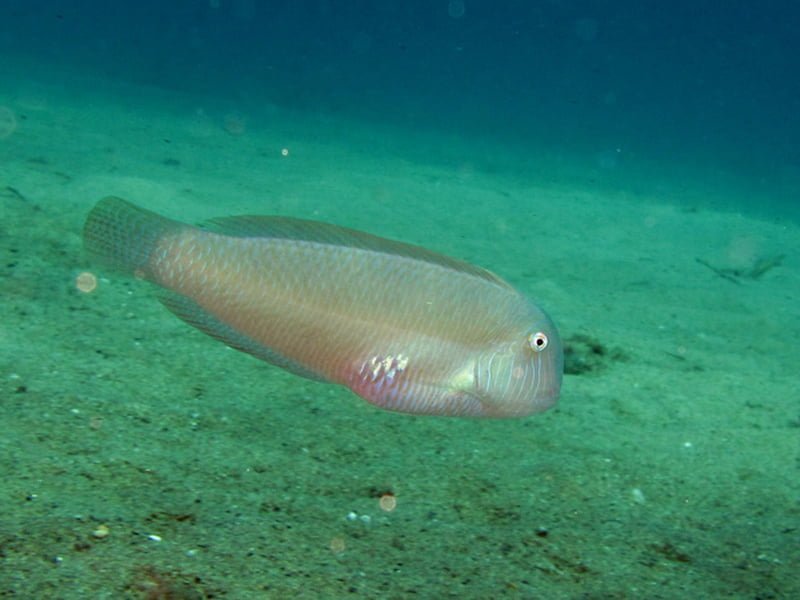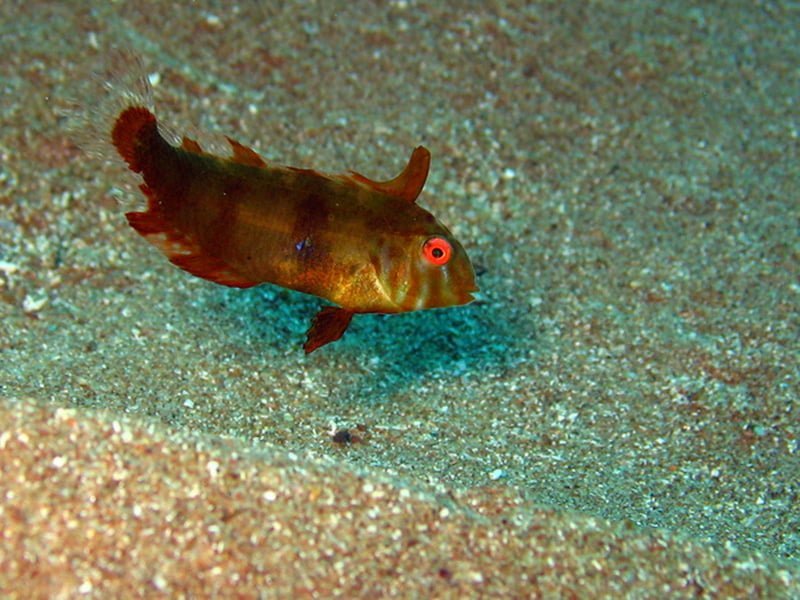Xyrichtys Novacula
– Pearly Razorfish –
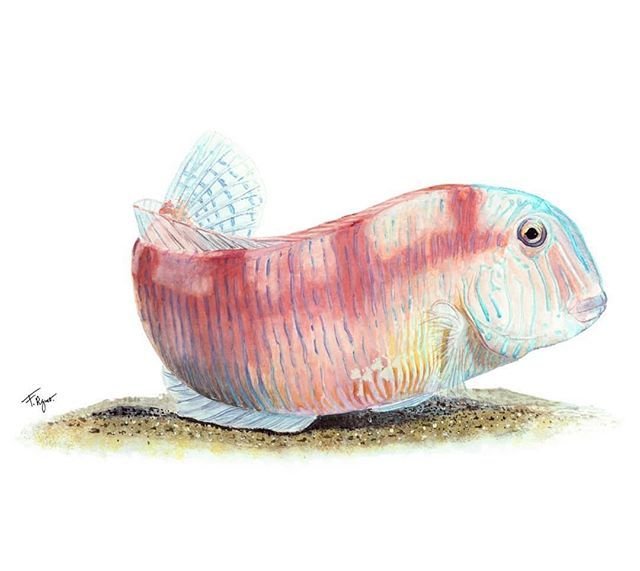
| Conservation status |
|---|
 Least Concern (IUCN 3.1)[1] |
| Scientific classification |
Xyrichtys novacula
(Linnaeus, 1758)
| Kingdom: | Animalia |
| Phylum: | Chordata |
| Class: | Actinopterygii |
| Order: | Labriformes |
| Family: | Labridae |
| Genus: | Xyrichtys |
| Species: | X. novacula |
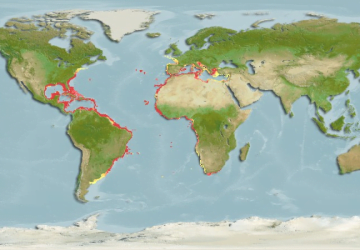
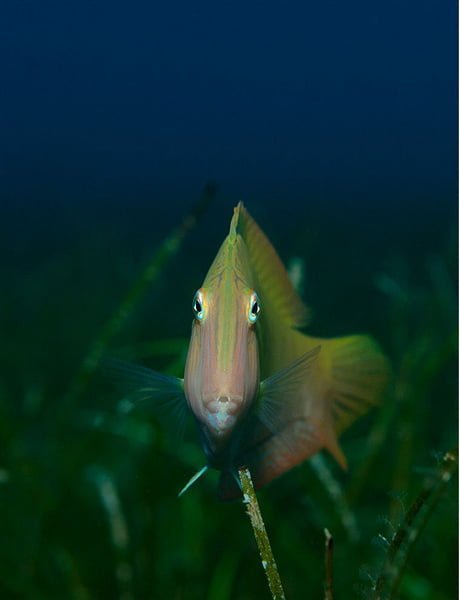
The pearly razorfish or cleaver wrasse, Xyrichtys novacula, is a species of wrasse. It is of minor importance to local commercial fisheries and is popular as a game fish. It can also be found in the aquarium trade.[2]
Description
Xyrichtys novacula can reach 38 cm (15 in) in total length, though most do not exceed 20 cm (7.9 in). Its body is elongate and very compressed laterally, the head is flattened, with a steep profile and sharp teeth. Its long dorsal fin extends along most of its back. It has 9 dorsal spines, 12 dorsal soft rays, 3 anal spines and 12 anal soft rays. This wrasse has a yellow-orange or reddish-pink color that is darker on the back and lighter on the belly, sometimes marked with green and gray stripes. Head shows vertical narrow light blue lines and there are scales with brisk reflexes on the abdomen. Upon capture, this fish has been known to turn its mouth and sharp protruding teeth past 90 degrees to either side in relationship to its own body as an attempt to be released from capture.[2]
The forehead is very narrow and steep, hence its name “razor”. The eyes are very high on the head . The mouth is small, with sharp teeth, and set very low.
Sand-colored, blue lines are apparent on the cheeks, between the mouth and the opercula .
Juveniles and females are whitish pink in color, the male being rather dull green.
The dorsal fin is continuous from the nape to the beginning of the tail. The dorsal and anal fins are orange, and the caudal is short with a rounded posterior border.
This fish is often held with its body at an angle, at a very low height above its territory (about 1 m above the sand).
Distribution
The pearly razorfish is widespread throughout the western and eastern subtropical and tropical Atlantic Ocean, as well as the Mediterranean Sea. It inhabits clear, shallow littoral areas with sandy or muddy bottoms, at depths of 1 to 20 m. In winter it migrates to greater depths, up to 90–150 m.
Biotope
Unlike most other Labridae, It inhabits clear, shallow littoral areas with sandy or muddy bottoms and small seagrass beds, at depths of 1 to 20 m. In winter it migrates to greater depths, up to 90–150 m.
Behavior and Alimentation
Xyrichtys novacula buries itself rapidly in the bottom when disturbed.
It feeds on various invertebrates that it captures in the sand. Small crustaceans, cnidarians, bryozoa, bivalves, gastropods and echinoderms.
The most consumed molluscs are bivalves: the nutlet Nucula nucleus , Plagiocardium papillosum and tellin Abra alba .
Reproduction
The female is mature from a size of 10 to 15 cm.
The spawning female has a red ventral patch (ovaries) and shiny pearly scales. This red spot allows the male to detect that the period is suitable for courtship.
Protogynous hermaphrodite * species (protogyny = first female and then male).
Females can become male when they have reached a size of about 17 cm and the social environment allows it. The reproduction takes place in summer. This wrasse does not build a nest but mates in open water and the eggs are planktonic *.
Synonyms
A large number of specific names have been determined to refer to this species as junior synonyms:[2]
| Coryphaena novacula Linnaeus, 1758 Hemipteronotus novacula (Linnaeus, 1758) Novacula novacula (Linnaeus, 1758) Coryphaena psittacus Linnaeus, 1766 Hemipteronotus psittacus (Linnaeus, 1766) Xyrichthys psittacus (Linnaeus, 1766) Coryphaena lineata J. F. Gmelin, 1789 Novacula lineata (J. F. Gmelin, 1789) Coryphaena lineolata Rafinesque, 1810 Novacula lineolata (Rafinesque, 1810) Amorphocephalus granulatus S. Bowdich, 1825 Novacula coryphena A. Risso, 1827 | Novacula coryphaena A. Risso, 1827 Xyrichthys uniocellatus Agassiz, 1831 Xyrichthys cultratus Valenciennes, 1840 Novacula cultrata (Valenciennes, 1840) Xyrichthys vitta Valenciennes, 1840 Xyrichthys vermiculatus Poey, 1860 Xyrichthys argentimaculata Steindachner, 1861 Xyrichthys rosipes D. S. Jordan & C. H. Gilbert, 1884 Xyrichthys jessiae D. S. Jordan, 1888 Hemipteronotus copei Fowler, 1900 Xyrichthys binghami Mowbray, 1925 |
ASSOCIATED LIFE
There is no associated life. The lone dominant male rules over several females and defends his territory against rivals. In the middle of this territory, we can observe a crater: the trace of the burial zone of the male during the night.
Predators
The Pearly razorfish has been shown to be successful bait for the Greater Amberjack species (aka reef donkey).
Various Biology
At night he buried himself under the sand. During the day, at the slightest warning, it “dives” head first under the sand and quickly and completely disappears into the substrate to avoid predators.
Further Information
The male has a harem of females which he defends against intrusions from other males. Females are spawned by only one male.
Approaching a group of scuba diving requires landing on the sand and waiting for all of the individuals to gradually reappear.
The rason can reach the age of 8 years.
